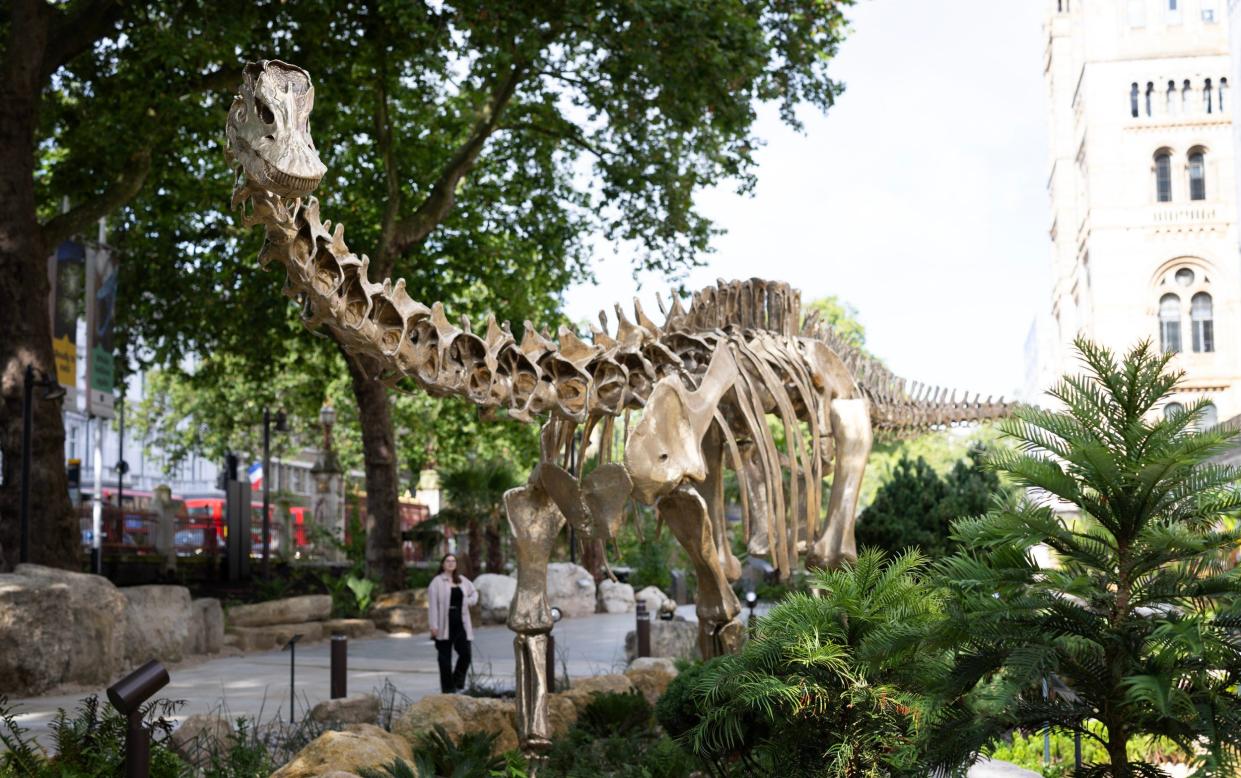Natural History Museum Gardens: This brand-new bronze diplodocus is a huge Jurassic perk

Forget a football final, is there anything as universal as a dinosaur? You might be more or less enthusiastic about your raptors and rexes, but nobody is anti-dino. Still less a diplodocus. David Attenborough evidently took lessons: it transpires the key to global popularity is to be ancient, benign and enthusiastic about plants.
So Fern, the handsome bronze diplodocus that was unveiled outside the Natural History Museum this morning, is a welcome addition to the Cromwell Road. She (or so we presume she is) stands outside the front of the museum, the centrepiece of a Jurassic garden, part of an extensive revamp that has turned the five acres of land around the museum into two educational public outdoor spaces: an Evolution Garden and a Nature Discovery Garden.
Using appropriate rocks, plants and models, the gardens tell half-a-billion years of evolution, as life emerged from the Cambrian soup, became ammonites, dinosaurs and eventually mammals, through several extinctions. The most striking floral absentee is grass, a come-lately that emerged only around 55 million years ago. Instead, the gardens are dominated by ferns, tree ferns and other rarer species.
It being 2024, the garden – like Attenborough – necessarily comes with an environmental message. The panel about tree ferns reminds us that much of the coal we are burning now began life as a carbon-capture machine. Unveiling the statue, the museum’s director, Dr Doug Gurr, said the gardens were a “cornerstone” of a strategy to make “towns and cities healthier and more sustainable places to live.” They are also fulfilling an even more important function: a civilised place to have a coffee in South Kensington.
In the spirit of testing dinosaurs’ universal appeal, I took my four-year-old daughter along to the launch. She is not yet a huge dino head, but she conceded Fern was impressive. In the hands of a knowledgeable guide, I expect the gardens could be brought more to life for the very young, but my ropey memories of the subject were not much help.
As well as the main event, there are other models dotted around the garden, including a Tiktaalik Roseae (early legged fish), Hypsilophodon (small dog-like dinosaur native to Britain), Megaztrodon (small, ratlike mammal), showing how we evolved from shellfish. Some of the detail was lost on my daughter. Not all of the signs have models, meaning a few fruitless minutes staring into ferns looking for statues that were not there. But when I interviewed her she seemed to have enjoyed the overall experience.
What did you think? “Good.”
Which was your favourite part? “The dinosaur.”
Which one? “The big one.”
Why does it have such a long neck? “Because it needs to eat very tall plants.”
What would you do if the dinosaur came to your house? “I would spray it with water. Can we go now?”
That is the other thing you learn from a dinosaur garden aimed at families: a million years might be the blink of an eye for the planet, but half an hour can be a million years when you are four.
